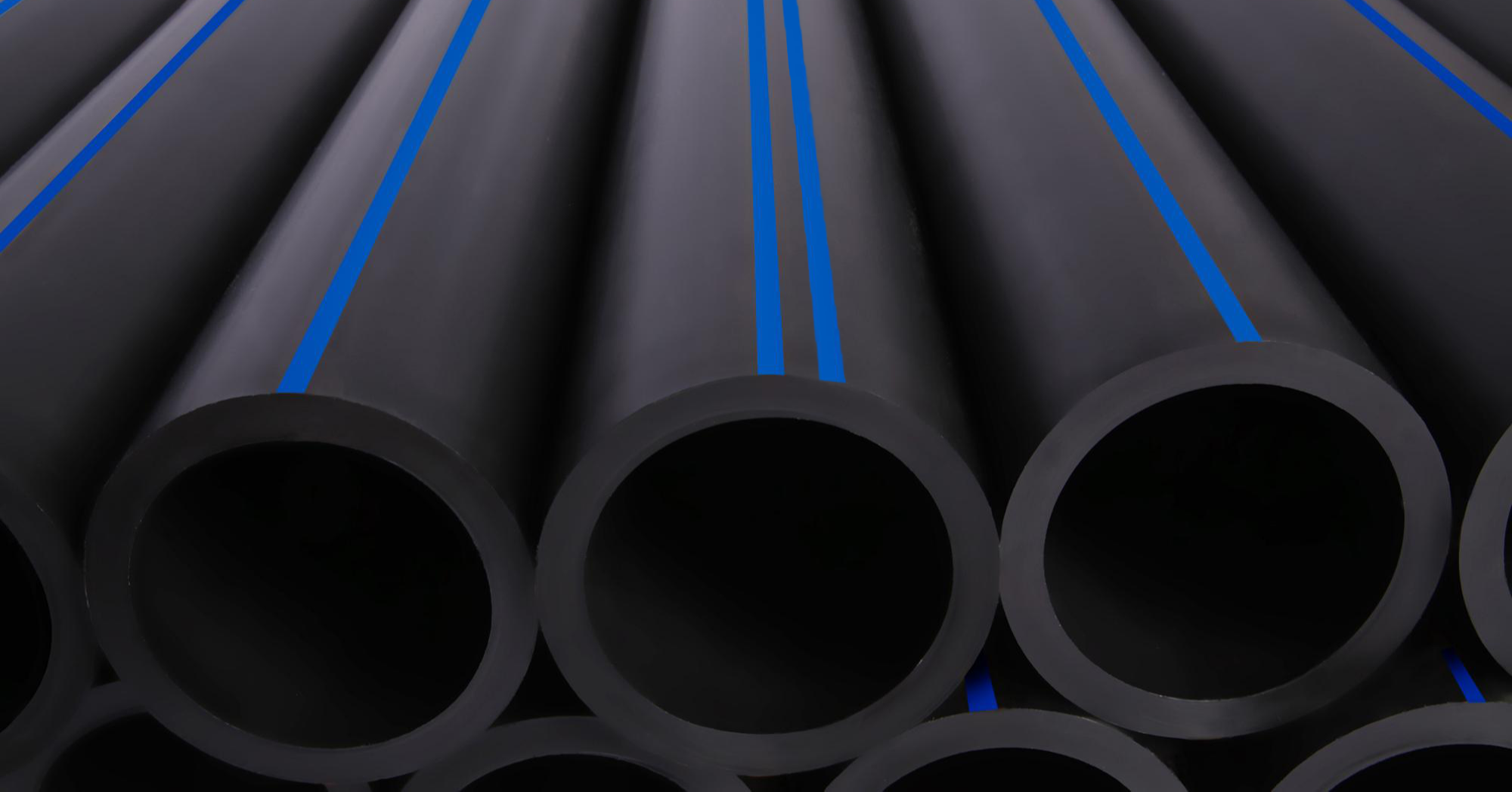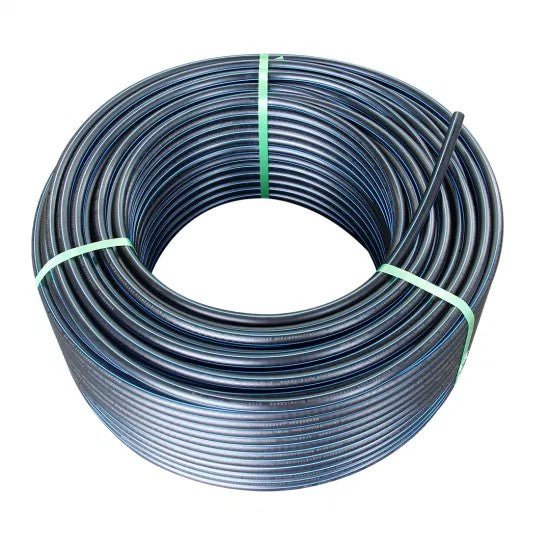The Role of Pipe Manufacturing Midland TX in Building Infrastructure
Discover the Production Process Behind High-Quality HDPE Pipeline and Its Applications
The manufacturing procedure of top quality HDPE pipes is complex and methodical. It begins with the selection of resources that boost efficiency. Following this, ethylene goes through polymerization to form resin, which is after that formed through extrusion. Quality control is critical, making sure that the last product fulfills rigid criteria. Nonetheless, the trip of HDPE pipes does not end with manufacturing. Their applications across various sectors expose a broader value worth examining.
Recognizing HDPE: Features and Advantages

High-density polyethylene (HDPE) is a flexible thermoplastic known for its longevity and resistance to different ecological factors. This material exhibits outstanding tensile toughness, making it suitable for demanding applications. Its low-density structure contributes to a lightweight item, helping with simplicity of taking care of and setup. HDPE likewise showcases remarkable resistance to chemicals, which decreases degradation when revealed to severe materials.
The product's reduced dampness absorption even more improves its long life, making it perfect for use in pipes and storage space containers. Additionally, HDPE is resistant to ultraviolet (UV) radiation, making sure that items maintain their integrity even when subjected to sunlight. Its versatility permits for the production of detailed forms without jeopardizing toughness. The eco-friendly nature of HDPE, commonly acquired from recycled products, includes to its appeal, promoting sustainable methods in production. On the whole, these residential or commercial properties and advantages make HDPE a favored option for various industrial and customer applications.
Resources Option for HDPE Manufacturing
The choice of resources for HDPE production is important to confirm the final item satisfies the preferred requirements and top quality requirements. High-density polyethylene (HDPE) is mainly produced from polymerized ethylene, obtained from fossil fuels such as gas or petroleum. The high quality of these feedstocks considerably influences the mechanical and thermal properties of the last HDPE.
Additives also play a significant duty in boosting HDPE's performance, including anti-oxidants, UV stabilizers, and colorants, which improve durability and resistance to environmental variables. The option process should consider not only the chemical make-up of the raw products yet likewise their processing attributes to guarantee reliable manufacturing.
The sourcing of raw materials must prioritize sustainability and conformity with environmental laws, as accountable techniques are vital in today's market. Inevitably, careful basic material selection lays the foundation for generating top notch HDPE pipes appropriate for varied applications.
The Extrusion Process: Forming HDPE Pipeline
The extrusion procedure plays a crucial role fit HDPE pipes, beginning with thorough product preparation methods that assure ideal circulation and uniformity. Just as essential is the style of the die, which directly affects the final dimensions and surface high quality of the pipeline. Together, these elements add significantly to the effectiveness and high quality of HDPE pipe production.
Material Preparation Methods
Effective manufacturing of HDPE pipelines starts with meticulous material preparation techniques, especially the extrusion procedure. Throughout this phase, high-density polyethylene material is very first dried out to remove dampness, making certain perfect flow attributes. The material is after that fed into the extruder, where it goes through heating and melting, changing right into a thick state. This heating process is thoroughly managed to preserve the material's honesty and performance. The liquified HDPE is compelled through a die, forming it into a continual pipeline form. Correct temperature level management throughout extrusion is crucial, as it directly influences the product's buildings and the end product top quality. When shaped, the HDPE pipeline is cooled down and cut to defined sizes, prepared for subsequent processing and applications.
Die Layout Importance
Precision in die layout plays an essential duty in the extrusion process of HDPE pipes. The die offers as the final shaping tool, straight influencing the pipe's measurements, wall surface thickness, and surface coating. A well-designed die warranties uniform product flow, decreasing defects such as irregularities and weak points. The geometry of the die need to be optimized to suit the certain buildings of HDPE, including its thickness and thermal habits throughout extrusion. Furthermore, the cooling price of the product as it goes through the die can considerably influence the pipe's architectural stability. Investing in advanced die modern technology is important for suppliers aiming to create high-grade HDPE pipes that satisfy sector standards and client assumptions.
High Quality Control Measures in HDPE Manufacturing
Various factors influence the top quality of HDPE pipeline production, effective quality control procedures are crucial to guarantee consistency and dependability in the last product (Texas hdpe pipe manufacturer). Secret top quality control methods include extensive material assessment, verifying that the raw polyethylene satisfies well-known criteria for pureness and thickness. During the extrusion process, specifications such as temperature level, stress, and cooling time are carefully kept an eye on to preserve dimensional precision and architectural stability
In addition, post-production screening is necessary; producers frequently conduct hydrostatic tests to analyze the pipeline's toughness and resistance to stress. Visual evaluations for surface defects better boost quality control. Certification from pertinent requirements companies, like ASTM or ISO, supplies an additional layer of integrity. By executing these comprehensive quality assurance measures, suppliers can lessen problems, boost performance, and ensure that the HDPE pipelines meet the details demands of numerous applications, inevitably causing customer contentment and depend on in the product.
Applications of HDPE Pipeline Across Industries
HDPE pipelines are utilized throughout various industries as a result of their longevity and flexibility. In water distribution systems, they assure reliable delivery, while in wastewater management, they offer reputable remedies for waste transportation. In addition, farming watering networks gain from HDPE's resistance to rust and adaptability, making it an excellent option for modern-day farming practices.

Water Distribution Systems
A considerable number of industries depend on high-density polyethylene (HDPE) pipes for efficient water circulation systems. Understood for their durability and resistance to deterioration, HDPE pipes are widely made use of in local water networks, farming irrigation, and commercial applications. Their lightweight nature helps with simple handling and installation, reducing labor expenses and time. Additionally, HDPE pipelines can fit different pressure degrees, making them suitable for both reduced and high-pressure systems. Texas hdpe pipe manufacturer. click here The adaptability of the product enables smooth integration right into existing infrastructure, lessening the demand for considerable excavation. In addition, HDPE's resistance to chemical seeping assurances that the water delivered remains risk-free and tidy, making it a suitable option for keeping the high quality of safe and clean water across numerous sectors
Wastewater Monitoring Solutions
Efficient water distribution systems likewise pave the way for innovative wastewater management solutions, where high-density polyethylene (HDPE) pipelines play a substantial duty. Prominent for their longevity and resistance to deterioration, HDPE pipelines are perfect for transporting wastewater in various setups. Their adaptability enables easy installation in intricate atmospheres, reducing the need for considerable excavation. In addition, HDPE's smooth indoor surface reduces rubbing, improving circulation prices and effectiveness. These pipes are additionally resistant to chemical leaching, ensuring that impurities do not jeopardize the surrounding environment. Industries, municipalities, and therapy facilities significantly count on HDPE pipelines for their dependability and longevity, making them a recommended choice for modern-day wastewater administration systems. This adaptability highlights the crucial importance of HDPE pipes throughout various applications.
Agricultural Irrigation Networks
Agricultural irrigation networks profit significantly from making use of high-density polyethylene (HDPE) pipes, which provide reliable and dependable water distribution to crops. HDPE pipes are light-weight, making them simple to transport and set up, while their flexibility enables for various setups in diverse terrains. These pipelines demonstrate outstanding resistance to deterioration, chemicals, and UV radiation, guaranteeing durability in extreme farming atmospheres. In addition, their smooth interior surface decreases friction loss, enhancing water circulation and reducing energy expenses associated with pumping. The durability of HDPE pipelines, usually exceeding 50 years, adds to decrease upkeep and substitute expenses. Consequently, farmers increasingly depend on HDPE pipelines to boost irrigation efficiency and promote sustainable agricultural methods, inevitably bring about improved crop returns and resource conservation.
Future Trends in HDPE Pipe Modern Technology
As the demand for sustainable and reliable facilities expands, developments in HDPE pipeline innovation are poised to change various sectors. Emerging fads include the integration of clever modern technologies, such as sensing units and IoT capacities, which help with real-time monitoring of pipeline problems, decreasing upkeep prices and avoiding leakages. Additionally, the advancement of sophisticated production techniques, such as 3D printing, is allowing the manufacturing of complex, personalized pipeline designs that satisfy specific job demands.
Additionally, the concentrate on recycling and round economic climate methods is driving the technology of HDPE pipes made from recycled products, enhancing sustainability. Enhanced jointing techniques, such as electro-fusion and mechanical installations, are additionally improving installment effectiveness and integrity. The growing emphasis on ecological laws is pressing suppliers to take on greener production procedures, making certain that HDPE pipelines not only meet sector criteria however likewise foster an even more lasting future for infrastructure development.
Regularly Asked Concerns
Exactly How Does HDPE Compare to Various Other Plastic Materials?
HDPE outmatches several various other plastic materials regarding durability, chemical resistance, and adaptability. Its reduced thickness and high tensile strength make it perfect for various applications, often going beyond options in both performance and long life.
What Are the Environmental Influences of HDPE Production?
The environmental influences of HDPE manufacturing include greenhouse gas exhausts, energy intake, and prospective pollution from producing processes. Furthermore, incorrect disposal can bring about soil and water contamination, raising problems about lasting environmental effects.
Can HDPE Piping Be Reused?
Yes, HDPE pipelines can be recycled. Several facilities accept made use of HDPE for handling, transforming it right into new items. This reusing adds to sustainability initiatives, decreasing plastic waste while preserving resources and energy in the production cycle.
What Is the Lifespan of HDPE Pipes?

Just How Do Temperature Level Variations Influence HDPE Pipe Performance?
Temperature level variations significantly impact HDPE pipeline performance, influencing versatility and toughness. High temperature levels can cause softening, while low temperature levels may create brittleness, eventually influencing the pipeline's toughness and suitability for numerous applications in diverse settings.